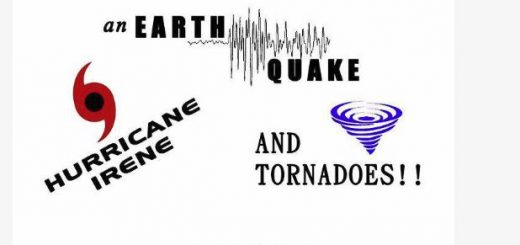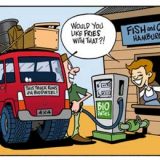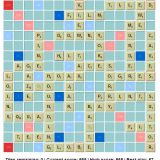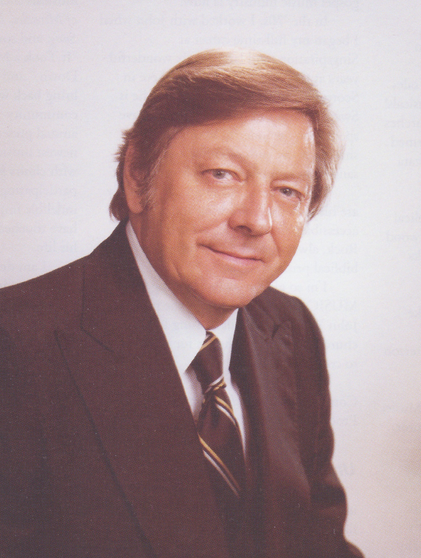Then What, Part II
Professor: What are you going to do after you graduate this coming spring?
Student: Well, I got a job lined up at an engineering firm.
Professor: That’s great, so when you get the job there, then what?
Student: Well you know (a girls name) in the class?
Professor: Yes
Student: Well we just got engaged. So, she and I are getting married.
Professor: Great! Then What?
Student: Well, uh, we’d like to work with that company for awhile, but afterward I’d eventually like to start my own business, have my own engineering firm.
Professor: Good! Then what?
Student: Well you know, my girl and I talked about it, once we get married, we’d like to have kids. Raise a family.
Professor: Good! Then what?
Student: Well, I don’t know, I’d like to work a few years, and then I guess, eventually, I’d like to retire.
Professor: Good. Then what?
Student: Well I guess we’ll raise our kids and get them off to college.
Professor: Good, then what?
Student: I don’t know, once we retire… I don’t know what to retired people do? I guess we’ll get a motorhome, travel the country, and see all the stuff all the stuff that we built.
Professor: Good, then what?
Student: Well I guess we’ll visit the grand-kids and see them grow up.
Professor: Uh huh, and then what?
Student: (almost laughing) I don’t know, I guess we’ll die!
Professor: and then what?
Then what indeed. What is beyond death and what about those near death experiences?
There are some factions within religion these days that are treading on thin ice. There are some scientists these days that seem to be playing fast and loose with the truth. So when the two come together and agree to some extent, I take a cynical notice.
The subject of the article I read today, was about near death experiences. Seems that on both sides of the aisle, they are making discoveries, after death, that there is something beyond here. This comes only a short while after watching the movie that was a gift for Christmas, “Heaven is for Real.”
I am no stranger to the subject. Two family friends have had this experience, I have heard the accounts. One was a woman with a family, one little girl, my best friend. The entire church prayed but she was pronounced dead by the doctors. The church only prayed harder. The next call was to say that the mother was back and no longer dead. The other experience was that of a little girl and her parents. She was dying and they were praying by her bedside. She drifted away and the parents prayed harder. This little girl, questioned her parents upon opening her eyes, why did they call her back? She was with Jesus, she said.
Heaven is for Real was a sweet movie, a fun watch, but there is always a nagging feeling in these true stories, wondering how much is real and how much artistic license did they use to make the story more watchable?
Before I go on, as far as I know, there is no specific scriptural support for near-death experiences. So, having said that, since scientific research these days seems less than reliable, I believe it’s both hard to discern if the stories are fake or imagined, but I wouldn’t say for sure they weren’t truth. I suppose I am saying, we can’t know.
Today I read Pam’s story:
Pam was brought into the operating room at 7:15 a.m., she was given general anesthesia, and she quickly lost conscious awareness. At this point, Spetzler and his team of more than 20 physicians, nurses, and technicians went to work. They lubricated Pam’s eyes to prevent drying, and taped them shut. They attached EEG electrodes to monitor the electrical activity of her cerebral cortex. They inserted small, molded speakers into her ears and secured them with gauze and tape. The speakers would emit repeated 100-decibel clicks—approximately the noise produced by a speeding express train—eliminating outside sounds and measuring the activity of her brain stem.
At 8:40 a.m., the tray of surgical instruments was uncovered, and Robert Spetzler began cutting through Pam’s skull with a special surgical saw that produced a noise similar to a dental drill. At this moment, Pam later said, she felt herself “pop” out of her body and hover above it, watching as doctors worked on her body.
Although she no longer had use of her eyes and ears, she described her observations in terms of her senses and perceptions. “I thought the way they had my head shaved was very peculiar,” she said. “I expected them to take all of the hair, but they did not.” She also described the Midas Rex bone saw (“The saw thing that I hated the sound of looked like an electric toothbrush and it had a dent in it … ”) and the dental-drill sound it made with considerable accuracy.
Meanwhile, Spetzler was removing the outermost membrane of Pamela’s brain, cutting it open with scissors. At about the same time, a female cardiac surgeon was attempting to locate the femoral artery in Pam’s right groin. Remarkably, Pam later claimed to remember a female voice saying, “We have a problem. Her arteries are too small.” And then a male voice: “Try the other side.” Medical records confirm this conversation, yet Pam could not have heard them.
The cardiac surgeon was right—Pam’s blood vessels were indeed too small to accept the abundant blood flow requested by the cardiopulmonary bypass machine, so at 10:50 a.m., a tube was inserted into Pam’s left femoral artery and connected to the cardiopulmonary bypass machine. The warm blood circulated from the artery into the cylinders of the bypass machine, where it was cooled down before being returned to her body. Her body temperature began to fall, and at 11:05 a.m. Pam’s heart stopped. Her EEG brain waves flattened into total silence. A few minutes later, her brain stem became totally unresponsive, and her body temperature fell to a sepulchral 60 degrees Fahrenheit. At 11:25 a.m., the team tilted up the head of the operating table, turned off the bypass machine, and drained the blood from her body. Pamela Reynolds was clinically dead.
At this point, Pam’s out-of-body adventure transformed into a near-death experience (NDE): She recalls floating out of the operating room and traveling down a tunnel with a light. She saw deceased relatives and friends, including her long-dead grandmother, waiting at the end of this tunnel. She entered the presence of a brilliant, wonderfully warm and loving light, and sensed that her soul was part of God and that everything in existence was created from the light (the breathing of God). But this extraordinary experience ended abruptly, as Reynolds’s deceased uncle led her back to her body—a feeling she described as “plunging into a pool of ice.”
Meanwhile, in the operating room, the surgery had come to an end. When all the blood had drained from Pam’s brain, the aneurysm simply collapsed and Spetzler clipped it off. Soon, the bypass machine was turned on and warm blood was pumped back into her body. As her body temperature started to increase, her brainsteam began to respond to the clicking speakers in her ears and the EEG recorded electrical activity in the cortex. The bypass machine was turned off at 12:32 p.m. Pam’s life had been restored, and she was taken to the recovery room in stable condition at 2:10 p.m.
Maria was a migrant worker who had a severe heart attack while visiting friends in Seattle. She was rushed to Harborview Hospital and placed in the coronary care unit. A few days later, she had a cardiac arrest but was rapidly resuscitated. The following day, Clark visited her. Maria told Clark that during her cardiac arrest she was able to look down from the ceiling and watch the medical team at work on her body. At one point in this experience, said Maria, she found herself outside the hospital and spotted a tennis shoe on the ledge of the north side of the third floor of the building. She was able to provide several details regarding its appearance, including the observations that one of its laces was stuck underneath the heel and that the little toe area was worn. Maria wanted to know for sure whether she had “really” seen that shoe, and she begged Clark to try to locate it.
Quite skeptical, Clark went to the location described by Maria—and found the tennis shoe. From the window of her hospital room, the details that Maria had recounted could not be discerned. But upon retrieval of the shoe, Clark confirmed Maria’s observations. “The only way she could have had such a perspective,” said Clark, “was if she had been floating right outside and at very close range to the tennis shoe. I retrieved the shoe and brought it back to Maria; it was very concrete evidence for me.”
One thing I am sure of.
There is life after this life. I don’t need a movie, or news story, or science to tell me about it.
But here is the trailer for the movie, Heaven is for Real.














